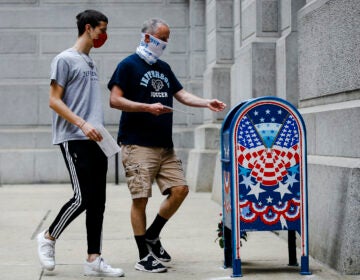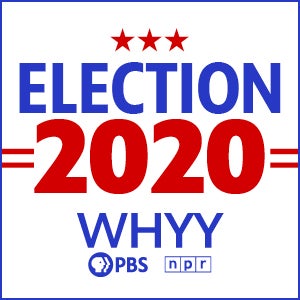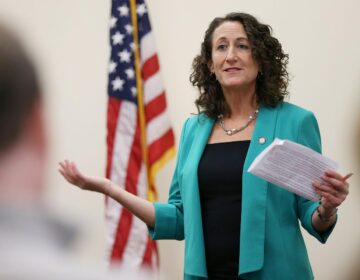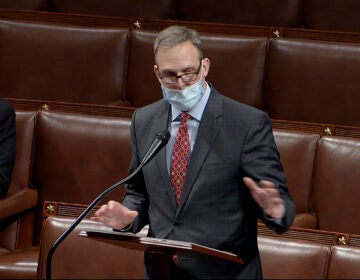What Pa. pollsters got wrong in 2016, and why 2020 might be different
They say polls of Pa. voters in 2016 were hurt by late-breaking news and a higher number of undecided voters. This time more voters have made up their minds.
Listen 1:36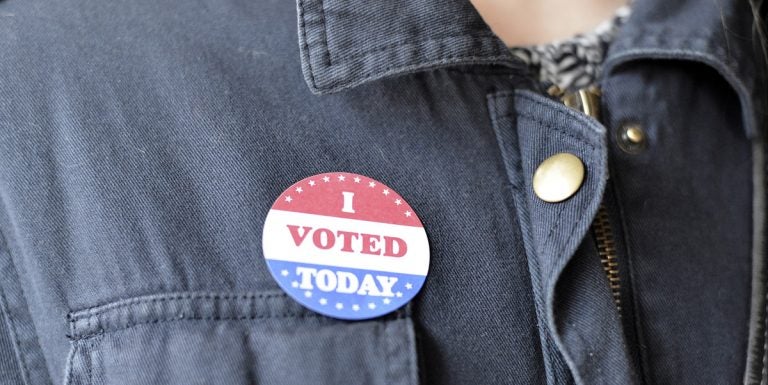
Voters come out in large numbers the moment the polls open at 7:00 A.M. (Bastiaan Slabbers for NewsWorks)
Ask us: What do you want to know about voting and the 2020 election?
Just one week away from Nov. 3, an average of polls of Pennsylvania voters shows former Vice President Joe Biden leading incumbent President Donald Trump by five percentage points.
Around this time four years ago, those same polls had Hillary Clinton favored over Trump in the commonwealth. Some surveys even had her winning by double digits. So now, many Pennsylvanians are wondering: Can we trust the polls in 2020?
Just three days before Election Day in 2016, Muhlenberg College poll numbers showed Hillary Clinton holding a six point lead in Pennsylvania. Ultimately, Donald Trump would win the state by less than 1%.
How does Christopher Borick, Director of the Muhlenberg College Institute of Public Opinion, account for that six-point swing? He said 2016 models didn’t account for educational attainment — and how much it can predict candidate preferences.
“What we saw was more voter turnout among those without college degrees compared to previous races,” Borick said. “That’s important because there’s a widening gap between how people with college degrees and without college degrees vote.”
People with college degrees tend to skew Democratic, which “wasn’t accounted for in a number of polling methodologies in 2016, especially in swing states and including our poll at Muhlenberg,” he explained.
Borick noted the methodology did accurately predict Republican U.S. Sen. Pat Toomey would win his 2016 Senate race by one point.
Another excuse for errant poll numbers: many voters detested both Clinton and Trump. “A lot of voters had to decide between two candidates they didn’t like, and that left them kind of waiting until the end to make that call,” he said.
Polling by the Center for Opinion Research at Franklin and Marshall College in 2016 projected Clinton winning Pennsylvania by 11 points. Director Berwood Yost chalked up the disparity to dislike of both candidates, as well as delayed decisions.
“What we saw from the exit polls was a number of late-deciding people who made their mind up in the last week of the campaign who heavily broke for Donald Trump,” Yost said. “And there was a group of about 17% of people in the state who had an unfavorable opinion of both candidates, and they also broke heavily for Trump.”
This time around, Yost estimates between 6% and 8% of voters are currently undecided, about half as many as his polls showed in October 2016.
Those are the voters who made the difference four years ago, the F&M pollster said. “There were all these dynamics that, analytically, we needed to have paid closer attention to.”
F&M’s final poll was published one week before the 2016 election. But it didn’t really take into account the FBI’s statement about further investigation of Clinton’s emails — 625 of the poll’s 863 interviews happened before that news broke. Many, including Yost and Hillary Clinton herself, believe that had a considerable effect on the outcome.
“We actually stopped [surveying voters] on the exact day that Jim Comey released his letter that he was reopening the investigation into Hillary Clinton’s emails. So that was something we definitely couldn’t account for,” Yost said.
Ultimately, Yost advised against treating the poll numbers like a “horse race.” Instead, he said people should understand the inherent limitation of polling and try to avoid becoming invested in projection models.
“When you [create projection models], you’re going beyond what a poll can do. They’re good at asking about people’s experiences and what they think and feel, but they’re less good as predicting future behaviors,” he said. “That’s when we start to get into difficulties, and that’s really what happened in 2016. There was a lot of unusual circumstances that year and we got the results we see.”
F&M has begun treating its methodology more holistically, including many more varied questions in their polling, instead of just focusing on candidate preferences.
“One of the biggest changes we made is we talk almost completely about context: favorability rating, voter interest, primary issues of concern, because those issues are less likely to change on a dime.”
Muhlenberg’s Borick said he tried to make his poll numbers as representative as possible, but also acknowledged polling is an inexact science, especially in what’s projected to be such a close race in Pennsylvania. He said election bettors should stay home this year.
“Do not be surprised if you see an outcome that the candidate trailing by a few points ends up winning. That poll is giving an estimate. Don’t fall in love with precision,” he said.
“By the way,” Borick added, “if you ever see a poll with someone using decimal points? It’s probably someone trying to sell you something, so be careful there.”
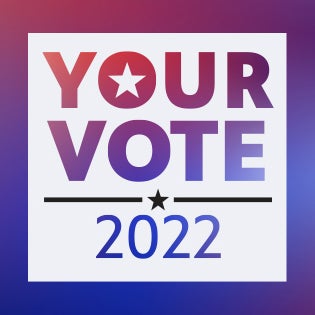
Your go-to election coverage
WHYY is your source for fact-based, in-depth journalism and information. As a nonprofit organization, we rely on financial support from readers like you. Please give today.



